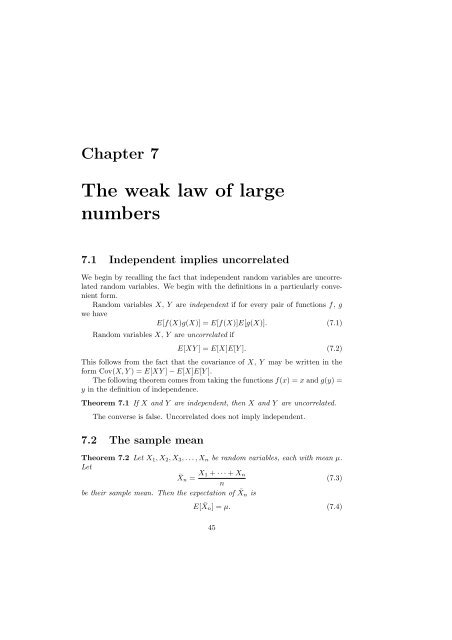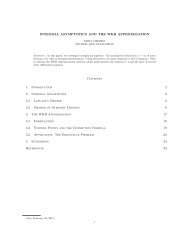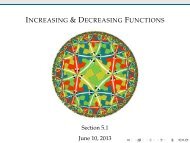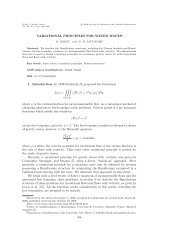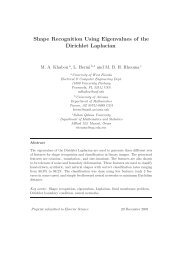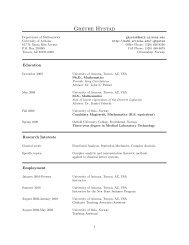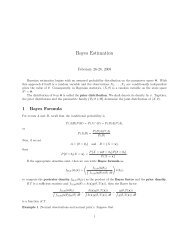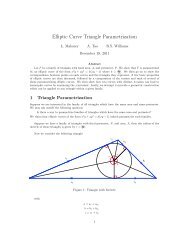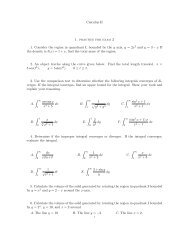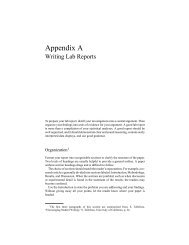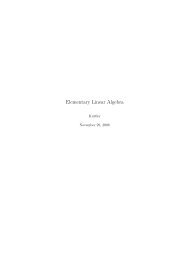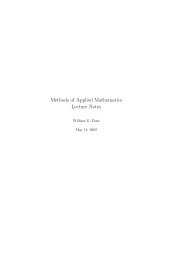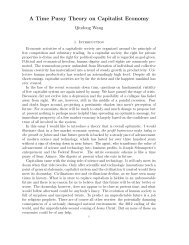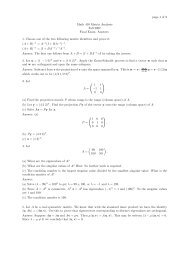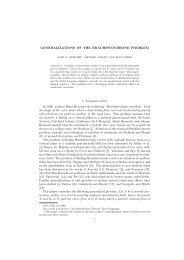Lectures on Elementary Probability
Lectures on Elementary Probability
Lectures on Elementary Probability
Create successful ePaper yourself
Turn your PDF publications into a flip-book with our unique Google optimized e-Paper software.
Chapter 7<br />
The weak law of large<br />
numbers<br />
7.1 Independent implies uncorrelated<br />
We begin by recalling the fact that independent random variables are uncorrelated<br />
random variables. We begin with the definiti<strong>on</strong>s in a particularly c<strong>on</strong>venient<br />
form.<br />
Random variables X, Y are independent if for every pair of functi<strong>on</strong>s f, g<br />
we have<br />
E[f(X)g(X)] = E[f(X)]E[g(X)]. (7.1)<br />
Random variables X, Y are uncorrelated if<br />
E[XY ] = E[X]E[Y ]. (7.2)<br />
This follows from the fact that the covariance of X, Y may be written in the<br />
form Cov(X, Y ) = E[XY ] − E[X]E[Y ].<br />
The following theorem comes from taking the functi<strong>on</strong>s f(x) = x and g(y) =<br />
y in the definiti<strong>on</strong> of independence.<br />
Theorem 7.1 If X and Y are independent, then X and Y are uncorrelated.<br />
The c<strong>on</strong>verse is false. Uncorrelated does not imply independent.<br />
7.2 The sample mean<br />
Theorem 7.2 Let X 1 , X 2 , X 3 , . . . , X n be random variables, each with mean µ.<br />
Let<br />
¯X n = X 1 + · · · + X n<br />
(7.3)<br />
n<br />
be their sample mean. Then the expectati<strong>on</strong> of ¯Xn is<br />
E[ ¯X n ] = µ. (7.4)<br />
45


